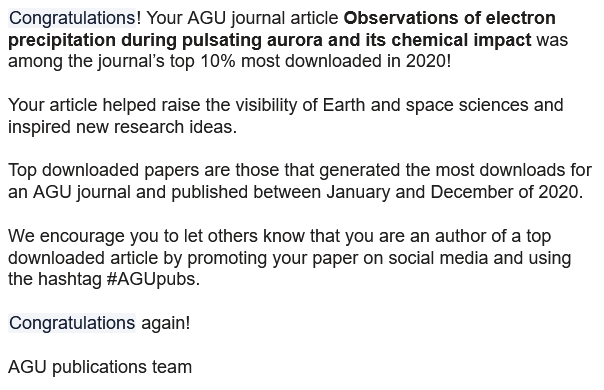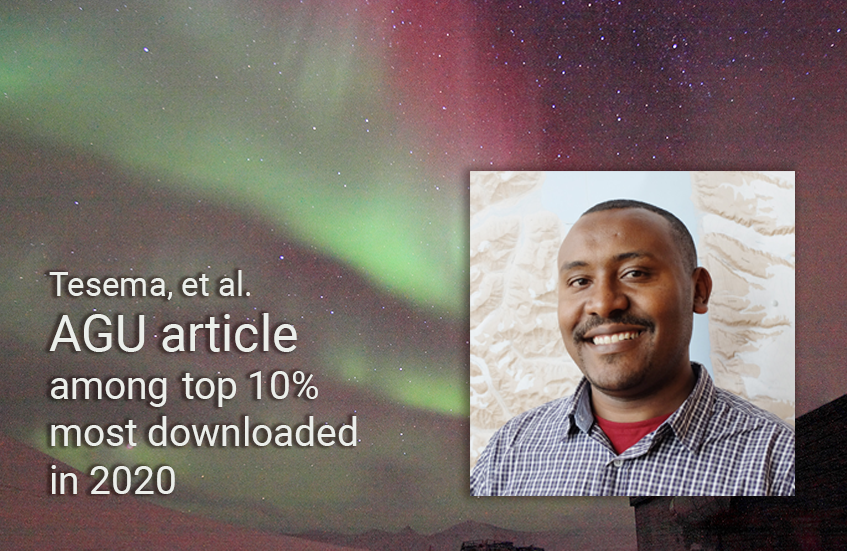In a recent email from the AGU Publication Team (see screenshot below), PhD Fasil Tesema and his co-authors were informed that the paper entitled “Observations of Electron Precipitation During Pulsating Aurora and Its Chemical Impact” was among the AGU journal’s top 10 % most downloaded in 2020.

“In this study we investigated electron precipitation spectrum during pulsating aurora for a statistically sound number of cases”, co-author Noora Partamies says. “These energetic electron spectra were constructed from particle measurements of three low-altitude spacecraft (POES, DMSP & FAST). We then modelled the atmospheric chemical consequences for the statistical median and extreme energy input with the Sodankylä Ion and Neutral Chemistry (SIC) model. The results show that median electron precipitation spectrum corresponds well to earlier case study results, while high-flux extreme depletes up to 80% of mesospheric ozone. This is due to the production of odd hydrogen gas, which works as a catalyst in ozone depletion reactions. On contrary, the low-flux extreme has no chemical effect on the atmosphere“.
In addition to Tesema and Partamies, the BCSS author list also include Hilde Nesse Tyssøy and Christine Smith-Johnsen, as well as Antti Kero from University of Oulu, Finland.
“Pulsating aurora is faint auroral emission related to relatively low fluxes of high-energy electrons. However, this type of aurora is very common, long-lasting and often occurs on both hemispheres simultaneously. It is thus an important investigation to determine both the energy spectrum of the precipitating electrons as well as the chemical consequences and their variability“, Partamies explains.




